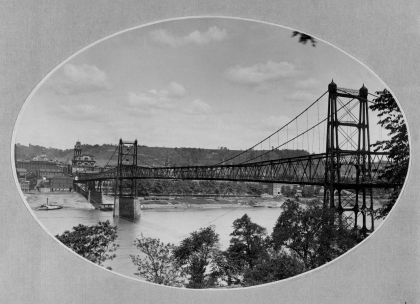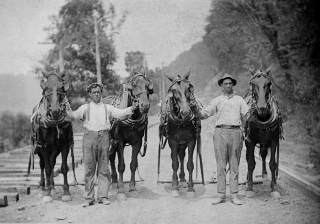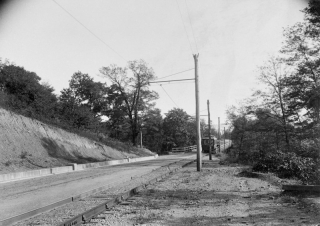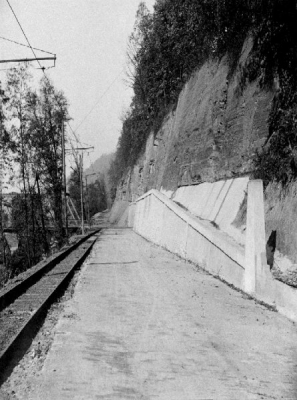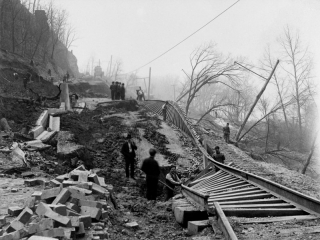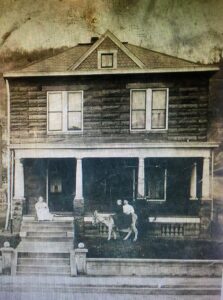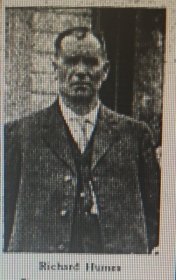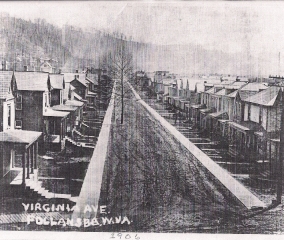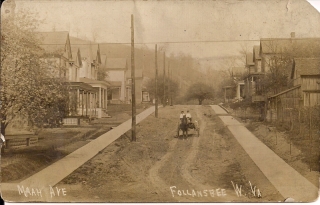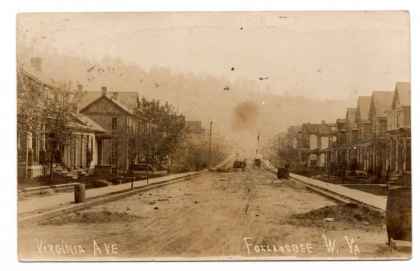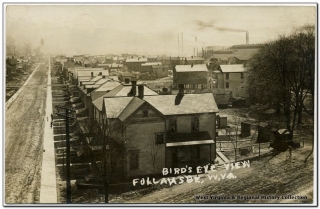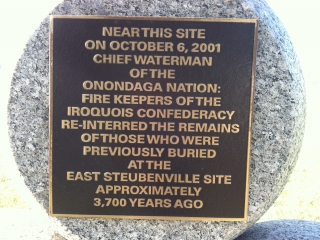The First Presbyterian Church was organized June 6, 1905. The first pastor was Rev. James L. Reed. While the earliest meetings were held at Sugar Grove schoolhouse, later services were held at Mahan’s hall on Main Street. The Sabbath School was organized on April 7, 1906, with James Lusk as superintendent. The church benefited from the support of one of its trustees William Banfield who was general manager of the Follansbee Brothers Mill that generously provided the church with two lots.
Mr. & Mrs. Thomas J. Mahan, Mr. & Mrs. B. H. Brestle, Mrs. Alex Finley, Miss. Ida May and Mrs. Mary Walcamp Jones were the first members to be recorded on the church records, joining by letters from their respective churches where they had previously belonged.
Thomas. J. Mahan, who became the first mayor of Follansbee, was the first elder of the new church. William Banfield, B.H. Brestle, L.V. Meek, and also T.J. Mahan were the first trustees.

In March 1910, Rev. Reed was stricken with paralysis and had to give up his work. He lived to see the work he had started finished by an able successor, Thomas C. Pears, of the Western Theological Seminary of Pittsburgh. Rev. Pears was officially introduced as the new pastor on July 21, 1910. The new church building was erected at a cost of $8,400, and dedicated on Sunday, October 23, 1910. In April 1911, the church, which had been receiving aid since it’s founding, became self-supporting.
The special work of the church pastors included efforts to create an Italian mission, and in January1912, Rev. Achille Cremonesi was called upon to conduct a ministry among the large immigrant Italian population of the city. The efforts of Rev. Cremonesi resulted in the dedication of the Italian mission at the corner of Broad Street and Virginia Avenue on a lot donated by the Follansbee Brothers Company. The little mission was described as a “cosy chapel, with an auditorium on the first floor and Sunday school room in the basement.” The building cost about $3,300. Dedication services occurred May 31, 1914.
Rev. T.C. Pears resigned on January 17, 1917, and accepted a position at the Calvary Presbyterian Church in Braddock, PA. Rev. John A. Shaw of Coltrain, Ohio, replaced Pears as pastor being formally welcomed on June 21, 1917. Rev. Shaw was in his first year as a minister when called to Follansbee. His wife Ethel Williams Shaw, of Wheeling, had experienced missionary work and was an accomplished musician.
One of the largest congregations to attend a service at the church occurred during the first World War in May 1917. A patriotic sermon honoring twelve young men awaiting to leave for training camps was given by Rev. Frederick S. Williams of Wheeling. The congregation sang “The Star Spangled Banner” in honor of the men. Large American flags draped the pulpit and were hung from the choir loft and balcony.
The 1917 annual report recorded 217 members active in the Follansbee First Presbyterian Church, including the Italian Mission. The efforts to build the mission progressed slowly. However, Achille Cremonesi’s congregation though small was a very devout one. Cremonesi, whose efforts resulted in the building of the Italian Mission, moved on accepting a position with an Italian congregation in Harrisburg, Pa. In the Spring 1918, he was replaced by Rev. F.P. Patrono. Rev. Patrono was a Canadian by birth and came to Follansbee from Gary, Indiana. Besides Italian being his first language, he was fluent in English. The Italian Mission continued existence into the 1920s before disappearing from the newspapers
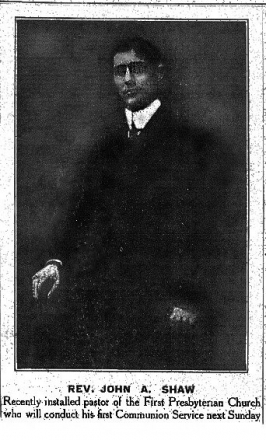 Photo: Follansbee Review – 1917
Photo: Follansbee Review – 1917

Photo Courtesy of Jim Piccorella.
- Follansbee Review, “Brief History of First Presbyterian Church,” June 23, 1917, p. 1.
- Follansbee Review, “Review of the Week,” April 12, 1918, p. 7.
- Follansbee Review, “Presbyterian Church Marks 50th Anniversary,” June 8, 1955.
 The “Nathaniel” docked on the Steubenville side of river in 1905. Courtesy of Jefferson County Library – Steubenville, OH.
The “Nathaniel” docked on the Steubenville side of river in 1905. Courtesy of Jefferson County Library – Steubenville, OH. 